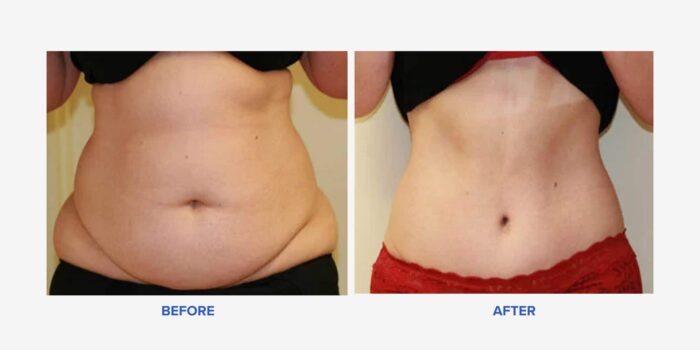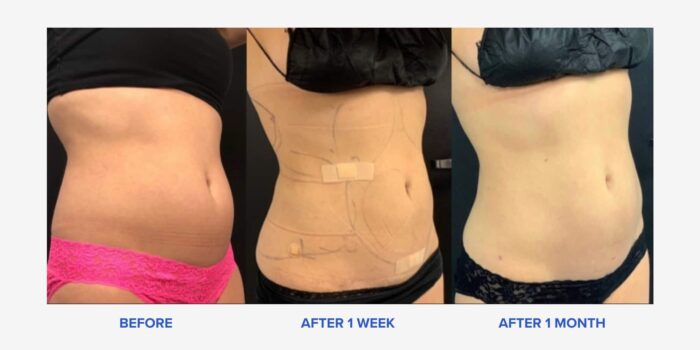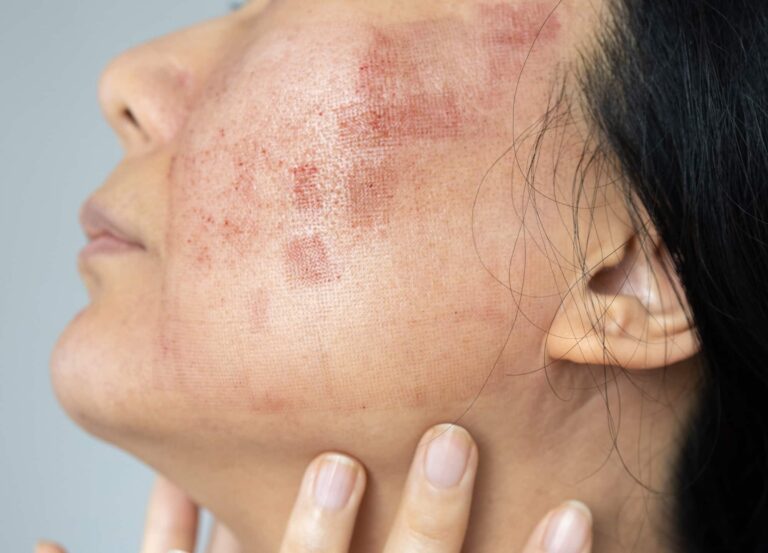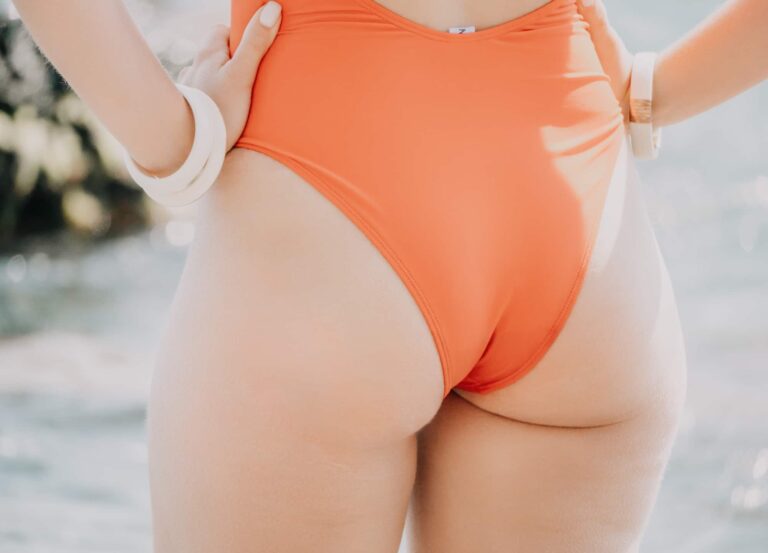Featured Experts
Dr. Jimmy Sung, a board-certified plastic surgeon in New York City
Dr. Erez Dayan, a board-certified plastic surgeon in Reno, Nevada
Dr. Paul Jarrod Frank, a board-certified dermatologist in New York City
Comparing any type of plastic surgery to its minimally invasive counterpart is comparing apples and oranges. Still, it’s something that happens time and time again, as people continue to seek out nonsurgical alternatives. Case in point: pinning BodyTite against a tummy tuck. “If minimally invasive treatments, like BodyTite, could replace surgery, surgery would be long gone. But tummy tucks still exist,” says Dr. Sung. Since one isn’t a direct substitute for the other, the goal is to parse out the very specific indications that make someone a good candidate for each treatment, he adds. So what are those specifics? Ahead, helpful criteria to consider plus a closer look at the differences between the two.
What is BodyTite?
BodyTite is an energy-based treatment that uses radiofrequency to heat the skin, ultimately causing it to contract and tighten. Unlike those of many other RF devices, BodyTite’s handpiece has not only an external portion that works on the surface of the skin but also an internal cannula that works on the underlying layers. It heats the fibroseptal network that connects the skin to the fascia, which in turn pulls down and tightens the skin, explains Dr. Dayan. “It’s delivering the heat on a deeper level than something like Morpheus8,” he explains. (Morpheus8 is radiofrequency microneedling that works superficially on the skin.)
That radiofrequency heat does also help to melt some fat as well, notes Dr. Dayan, although he’s quick to note that BodyTite isn’t a fat-removal device. Rather, providers almost always pair BodyTite with liposuction, using the heat from the former to make the fat easier to remove; Dr. Dayan says he does so 99% of the time.
Because the cannula does penetrate the skin, this is considered minimally invasive. Still, the areas that are punctured are small and shouldn’t scar, and the procedure can be done under local anesthesia. Recovery is also minimal. “When BodyTite is paired with liposuction, it’s about a 24- to 48-hour recovery period. If it’s done on a Friday, you’ll be back to work on Monday,” says Dr. Frank.
What is a tummy tuck?
A tummy tuck is a surgical procedure that addresses muscle, fat, and skin, says Dr. Dayan. A traditional tummy tuck typically involves muscle repair of any abdominal separation (diastasis), liposuction to remove fat, and a surgical excision of excess skin. “These are three things that no device can do, but the trade-off is a significant scar,” Dr. Sung points out. Not to mention, there’s a lengthy recovery period that can span weeks or months as well as all the potential complications associated with any surgery or going under general anesthesia.
Who is a good candidate for a tummy tuck?
“The number one sign that automatically puts someone in the tummy tuck category is muscle damage,” says Dr. Frank. That aside, the amount of excess skin is also important to consider. “If someone has a roll of loose skin that hangs over when they’re standing up straight, I consider them a tummy tuck candidate,” Dr. Dayan says. It bears mentioning that a person’s general health is important to take into consideration too. Someone may have muscle separation, have lots of extra skin, and really benefit from a tummy tuck but might not be healthy enough to undergo such a significant surgery, Dr. Sung adds.

Who is a good candidate for BodyTite?
While it may seem like anyone who doesn’t fall into the tummy tuck camp is automatically well qualified for BodyTite, it’s not that simple. “Some of the hardest patients to do the procedure on are those with no fat at all. The more fat you remove, the more the skin is going to contract on its own and the better the result they’ll have,” Dr. Dayan points out. Dr. Frank agrees, referring to these patients as “skinny loose.” They’re very thin, but when they bend over you can see some lax skin on their abdomen, he says. For this subset, he relies on treatments such as Ultherapy, Morpehus8, and Ellacor, all of which can help tighten skin and improve a crepey texture, another common issue. Dr. Frank considers how much excess skin and/or fat someone has on a scale of 1 to 10: “The ‘skinny loose’ patients are a two to three, those who are candidates for BodyTite and liposuction are a five to seven, and anyone who’s at a 7 to 10 needs a tummy tuck.”

Is BodyTite ever done at the same time as a tummy tuck?
It theoretically can be, but according to the doctors we spoke with, it’s not necessary. If a tummy tuck is performed well, there shouldn’t be any need; the skin is already being removed, so a BodyTite add-on is more of a marketing tactic than anything, says Dr. Dayan. Dr. Sung agrees, noting that anything you tack on to a surgery will only increase the potential risks.
How do you know which is right for you?
BodyTite will never be a replacement for a tummy tuck, but according to Dr. Dayan, a lot of people are okay with that. “BodyTite does cast a wide net because people want improvement without incisions or downtime. We’re moving away from the days of an ‘all or none’ mentality, and they can accept living with a lesser result if it means less downtime,” he says. Dr. Frank goes on to say that the drastic increase in the use of weight-loss drugs (Ozempic, Wegovy) has also led to a boom in popularity of body-contouring procedures such as BodyTite. Weight loss leads to loose skin, but also, as people start to feel more empowered about how they look, they’re thinking about these treatments as the icing on the cake, he says.
At the end of the day, the best course of action is to speak with a board-certified plastic surgeon—and recognize that no matter which option you choose, there will be trade-offs.











